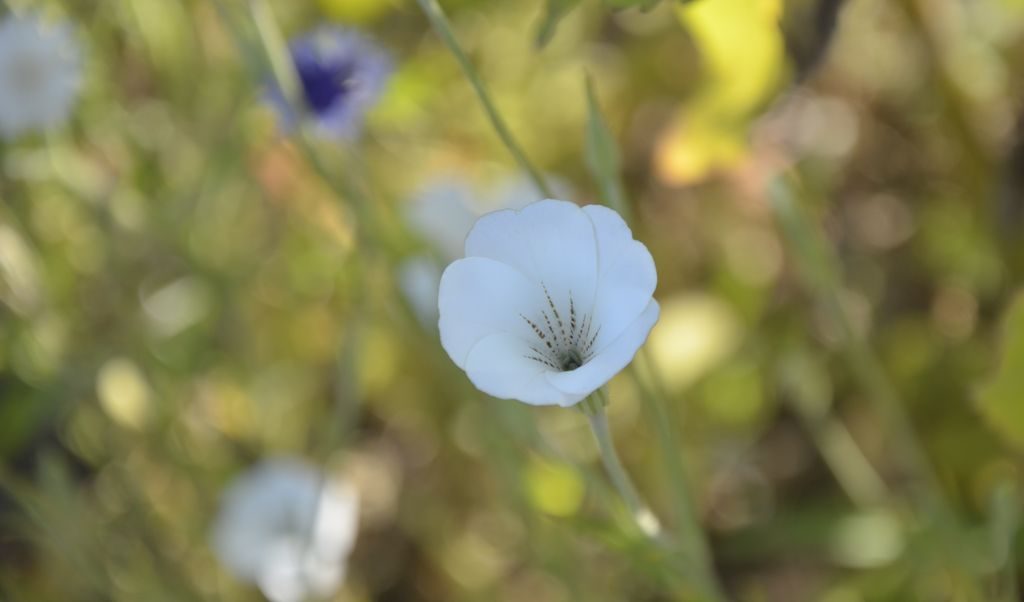Corn Cockle – Agrostemma githago

Some 5000 years ago corn cockle was known to the early farmer already. It was a constant in fields of cereals. Only when seed cleaning and weed killers became widespread, corn cockle became rare. 1996 it was short of extinction in Germany. Now, the humble beauty has started making gardens its new home.

Like cornflower corn cockle is an archeophyte, a plant not native but introduced at a very early stage, infact it has become part of our flora in prehistoric times. Originally it might have been native to the oriental regions. It is tightly connected to early farming: corn cockle was harvested, threshed and in the end sown together with the respective cereal – and it got itself perfectly adapted to this procedure. The seeds are approximately the size of cereal grains.

The seed capsules are narrower at the top, so the seeds will stay in unless they get their threshing. The seeds will germinate immediatly after sowing, just like cereal grains, and thus grow together with the crop. The sepals grow quite long and stand above the rest of the crop to take in the sunlight for photosynthesis.

Botanically corn cockle is a member of the carnation family, known to the gardener as pinks. Their flowers have five sepals and petals, the seeds grow within a bulbous seed capsule. The green calyx is covered by fine shiny hair that will look just magical when full of droplets of dew. Corn cockle can grow to a height of 140 cm, their roots can go as deep as 80 cm. The whole plant is poisenous. It is a hardy annual which when germinating in autumn will build a rosette of leaves and withstand even severe frost. The scarlet flowers, which are almost white in their inner parts, shine from June until August. They are visited by a variety of pollinators mainly hover flies, butterflies and bees. This is true for both the wild scarlet and the white garden variety.

Corn cockle will grow in almost any soil, but it definitely prefers a sunny spot. It can form its own crowd and look like a scarlet ocean swaying in the wind. It is a valuable flower for many pollinators and when combined with poppies, cornflower and daisies will make a stunning spot in the garden that will be eagerly visited by pollinators.

Recommended for any gardener with nature on their mind:
Adrian Thomas „Gardening for Wildlife – A Complete Guide to Nature-friendly Gardening“ 2017, Bloomsbury, London+NY

Suppliers of ecological seeds and plants of wildflowers (please check for customs restrictions if planning to order from outside Germany):
Bingenheimer Saatgut AG, Kronstraße 24, 61209 Echzell, www.bingenheimersaatgut.de
Dreschflegel Bio-Saatgut, In der Aue 31, 37213 Witzenhausen,
www.dreschflegel-saatgut.de
Hof Berg-Garten, Björn Lau, Lindenweg 17, D-79737 Herrischried,
www.hof-berggarten.de
